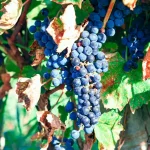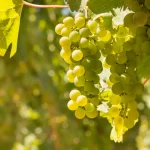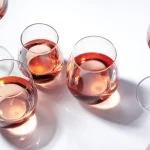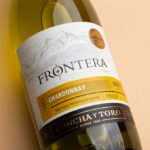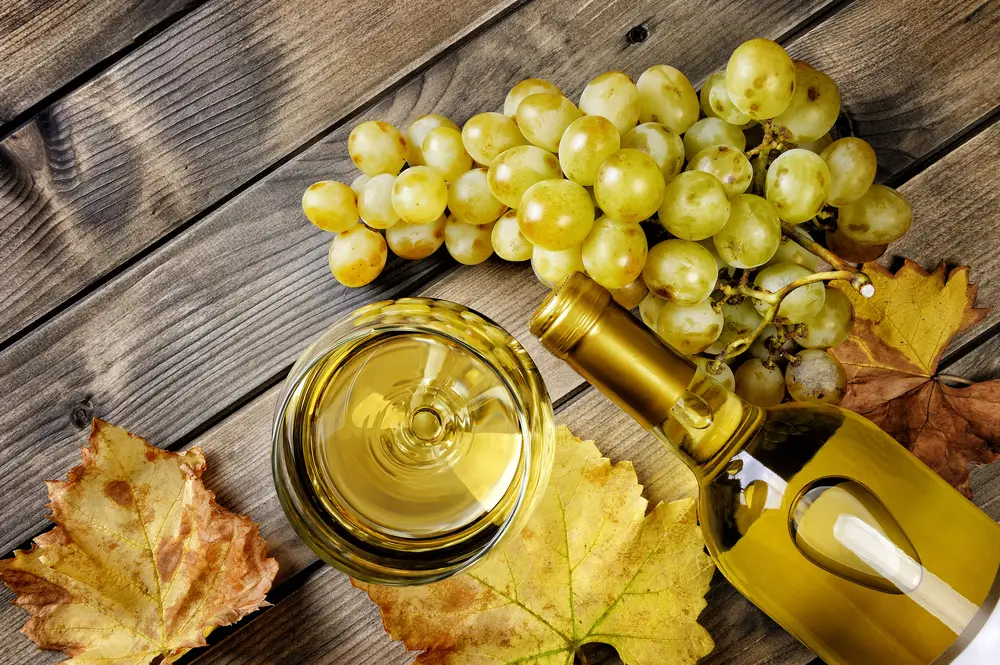White Zinfandel is a lot of things. It can be remarkably sweet. It can be refreshingly dry. It pairs well with a whole host of delicious options. And it’s exceedingly popular, selling 4.5 million cases each year at a tune of $800 million.
But one thing it’s not? White. This rosé made from a dark-skinned grape with a creamy-colored center was actually winemaking gone awry.
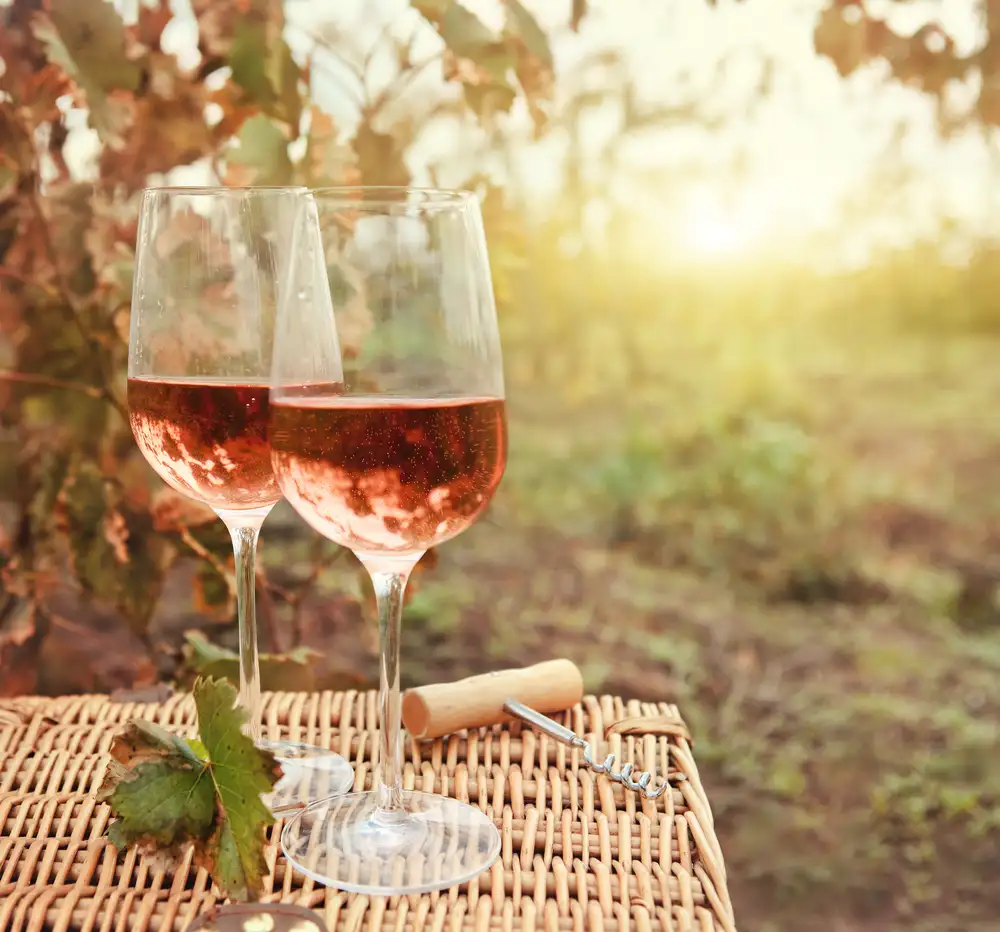
So, What Is White Zinfandel?
It was the late 1940s in sunny California, and Bob Trinchero and his Sutter Home’s team wanted to produce a deeper-colored, more robust Red Zinfandel.
They started the process the same as they would any other rosé by letting a smaller amount of grapes sit in a large quantity of pressed juice for its usual 2-20 hours.
But then, the unexpected (and history) happened.
They decided to experiment and see what would transpire if they “bled” some of the liquid off to let the deep red to purplish-black skins of the fruit soak in a lesser ratio of juice.
Would that create the intense color they were trying to achieve? It did. So, what was the big deal?
What do they do with the over 500 gallons of skimmed off liquid so it doesn’t go to waste and they didn’t lose money? Their solution (and here’s the history-making part): bottle the pink-colored, dry juice.
But instead of calling it a rosé (which had gotten a bad rap when a Portugal wine — Fiasca — was introduced in the States and its name too closely resembled “fiasco”), they marketed it with a more novel, palatable name, White Zinfandel.
Thus, the berry flavored White Zinfandel was born.
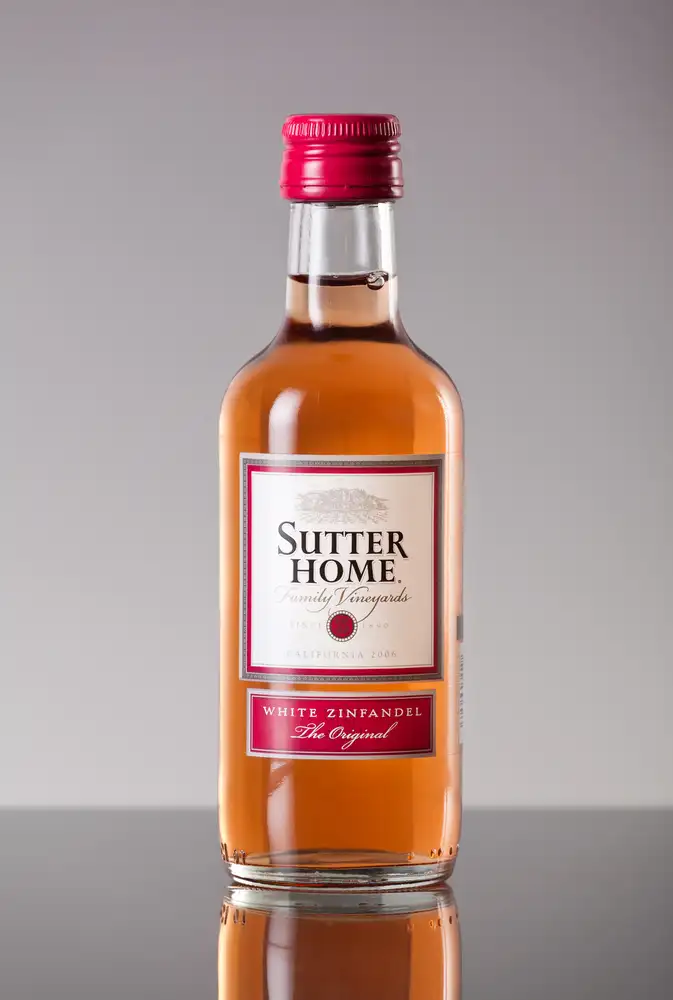
Why Is White Zinfandel Sweet?
Just as the light, reddish-hued wine became White Zinfandel by accident, so did its sweetness.
Sutter Home was on the forefront again when in 1975, a batch of White Zinfandel experienced unforeseen stuck fermentation.
Typically, when wine is fermented, yeast is added to the grape juice (or in the winemaking world known as “must”) to break down the fruits’ sugars into alcohol.
But wine is very fickle and just like Goldilocks, the conditions need to be just right — not too hot, the yeast not too old, and the right amount of water used.
In stuck fermentation, just as its name suggests, the yeast just stops (dies off, actually) before it can convert all the sugars.
When this happens, a winemaker has a couple of options: they can try to get the fermenting going again by adding more yeast or adjusting the temperature, or they can just mix it with other wines.
What Sutter Homes decided to do was to let this relatively sweet, easy-to-sip wine have its solo debut.
After all, they started the White Zinfandel trend by selling the unexpected. Why not give its newest personality a try?
White Zinfandel’s Increase in Popularity
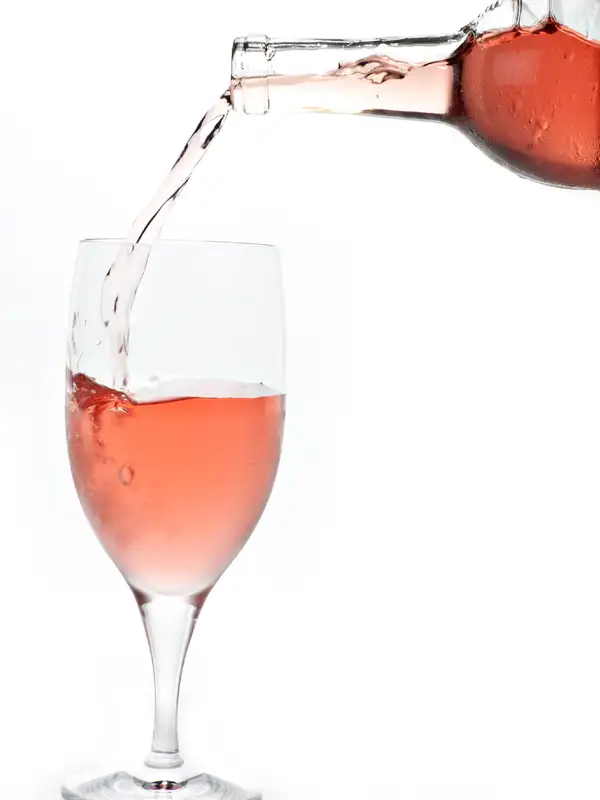
The happy little skimming and stuck fermenting mishap created a domino effect.
Soon other winemakers were tapping into this cost-effective way to bottle the excess juice from Red Zinfandel and sell it as White.
And because it took very little to produce it, they could market it as a low-cost alternative.
Sales skyrocketed. Wine drinkers — even those that didn’t think they liked fermented grape juice — were drawn to its uncomplicated, sweet, fresh-berry flavors and low astringency and tannins.
It had an attractive hue, was easy to drink, and took the country by storm, converting non-believers into loyalists.
Then in the 80s — when hair was big, cocktails were canned, and salad bars were all the rage — White Zinfnadel became even more accessible as it was offered up in a box.
Now, about 4 bottles of the sweet goodness came in a resealable, convenient package that didn’t require a cork, was easily dispensed, portable, and even more inexpensive.
The rosy-colored White became THE wine of choice. The cheapest one on the shelf and the go-to mixer for spritzers and sangrias.
But just as its popularity grew, so did the critics disdain.
How could a truly good wine go against all principles of centuries-old traditions of winemaking prowess by being distributed in cardboard?
Although touted by its followers, “Rosé All Day” was snubbed by some enthusiasts and its reputation took a hit.
Until “millennial pink” became the choice of a generation in the late 1990s and early 2000s.
White Zinfandel had emerged again, but this time with less syrupy sweetness and a bolder, dryer finish.
How Sweet Is White Zinfandel?
It all comes down to numbers. Winemakers and sommeliers use a dryness scale to determine a wine’s sweetness:
- Dry (00/0)
- Off-dry (1-2)
- Medium dry or semi-sweet (3-4)
- Sweet (5-6)
- Very sweet (7+)
Where a wine scores depends on how much residual sugar and acid it has.
But that’s not all. The grape’s age also is a factor. Those that are picked earlier have less sugar and more acid than those that hang on the vine longer.
Some winemakers infuse more sweetness by sunning the harvested grapes in natural sunlight. And then, as we’ve learned, fermentation effects how sweet it will be.
Which brings us to: how sweet is White Zinfandel? It’s typically considered on the higher end of the scale (somewhere in the 5-6 range). But not as high as dessert or fortified wines.
Related: Rose sweetness to dryness chart.
White Zinfandel vs. Dessert Wines
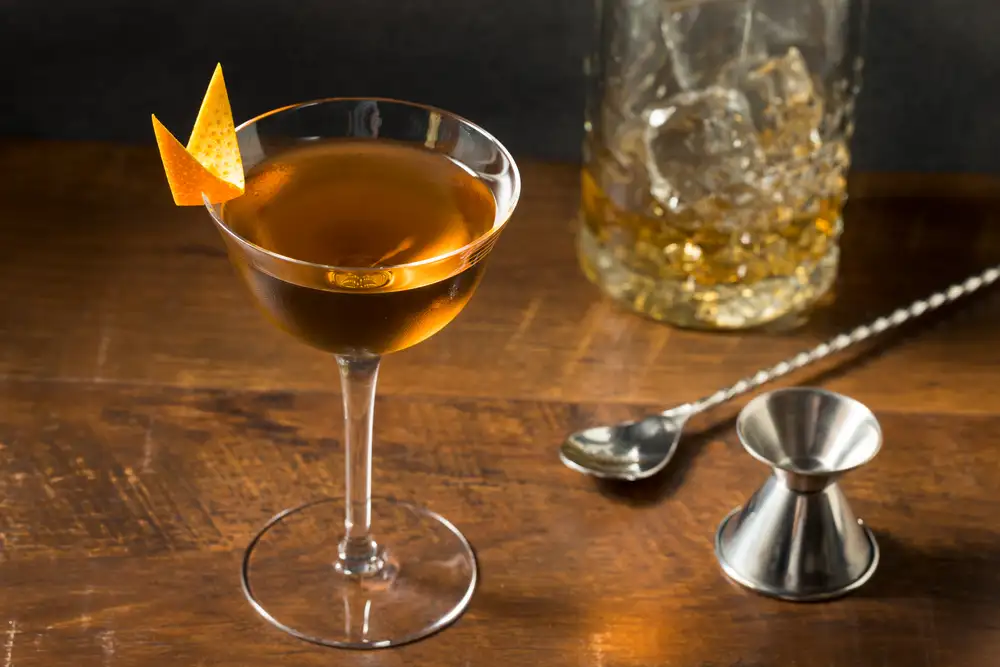
Dessert wines are just as they sound — meant to top off a meal.
And just like a last course, are often sweeter (which translates into higher alcohol content) and paired with cheese or sipped on its own.
Regional wines, like Tokaji Aszú (Hungary), Eiswein (Austria), Passito (Italy), Port (Portugal), Madeira (Morocco), Beerenauslese (Germany), Sauternes (France), or Sherry (Spain) usually tip the scale at 7+ points.
But different regions have different definitions of what constitutes a dessert vs. sweet wine.
For instance, even though White Zinfandel falls below a dessert on the wine-tasting chart, the United Kingdom considers any sweet wine a dessert wine.
In the U.S. a bottle can only be considered a dessert wine if its alcohol content is more than 14% (which is more than White Zin’s 9-12; only rare types have 14% ABV or alcohol by volume).
Additionally, while White Zinfandel uses stuck fermentation, dessert wines go through an “arresting” process. The active yeast is stopped (which creates lower alcohol content) and more alcohol is added to bump up the sweetness.
So, which is sweeter? Dessert wines take the honor.
White Zinfandel vs. Fortified Wines
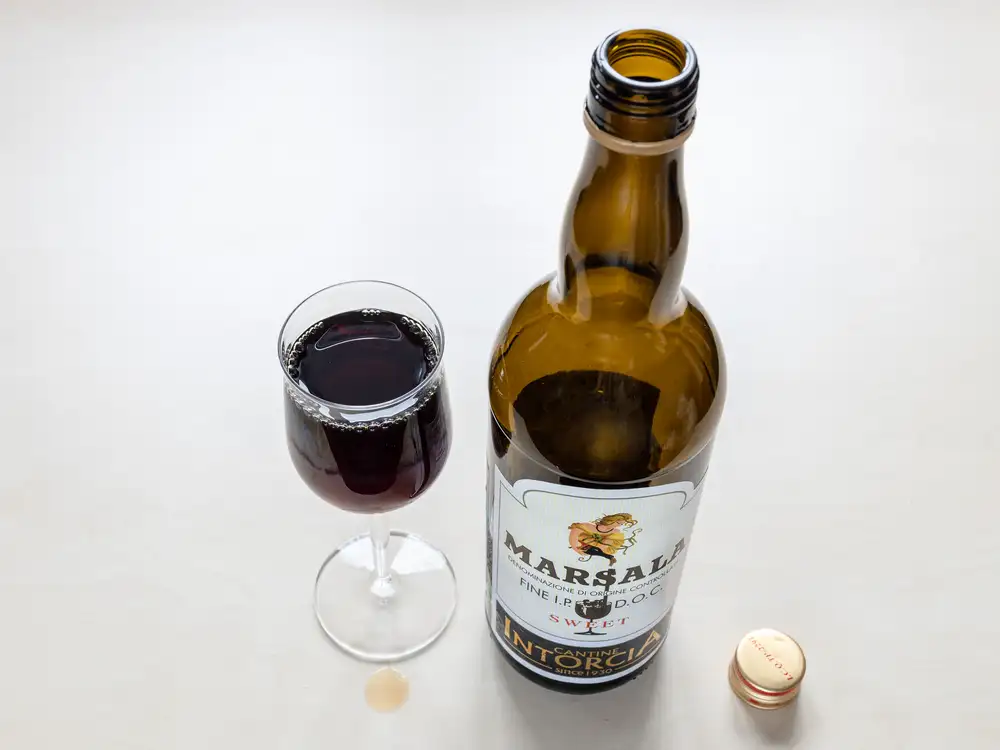
Just like fortified juice, fortified wines have added ingredients, but in this case, it’s distilled spirits (most notably brandy or cognac), not nutrients.
The additives are meant to increase its alcohol content and extend its shelf-life (a little history: it started in the late 17th century to help stabilize and preserve wines for long ship journeys across the pond).
There are five types of fortified wine: sherry, port, madiera, marsala, and vermouth.
Something to note: this before- or after-meal sipper may be made all over the world. But just like true Champagne can only be called that if it’s made in the Champagne region of France, fortified wine known as sherry can only have that name if it’s made in Jerez, Spain.
What makes fortified wine sweet or dry? It’s all in the timing.
If the spirits are added before the grape juice has been fermented, it leans toward the sweeter side. If they’re added after fermentation, the final outcome is dry.
How the “addition” wines compare in sweetness to White Zinfandel depends on what you choose. Port is typically richer, sweeter, and heavier in alcohol (like a dessert wine), while sherry (still considered a dessert wine) is drier.
Madeira can have a wide range of sweetness from extra dry to sweet, while vermouth is typically “aromatized” with herbs and spices, and can be dry (to make martinis and has about 4% sugar) or sweet (to make Manhattans and has 10-15% sugar).
Then there’s marsala, which is often used more in cooking (to create nutty, rich caramelized sauces) when it’s the dry or semi-dry variety.
While its sweeter counterpart is served as an apéritif (a fancy word for an alcohol beverage served before a meal to stimulate appetite) or after dinner as a digestif (to aid digestion).
When Is White Zinfandel a Dry Wine?
Zinfandel grapes left to their own devices aren’t really sweet at all; by nature, they’re actually dry. So the more recent explosion of dry Zinfandel wines can be attributed to the grapes and how they’re processed.
For a drier wine, the signature fruit should have 24 to 26 degree Brix (which, more scientifically means 1 degree of Brix equals 1 gram of sugar per 100 grams solution).
If the vines are grown in hotter climates, the sugar accumulation in the Zinfandel will happen quicker than in a cooler climate.
Soils where they’re grown can also make a difference.
Fertile land will enhance their growth and account for little sugar concentration, whereas sandy, rocky, “poor” soil will keep the plant from producing its fruit too quickly (and thus, boosting its sweetness content).
There is, of course, the factors of how the final product is produced.
If winemakers want to keep up with the Joneses (or more like the Sutter Homes-es), they’d stop, slow, or stick the fermenting process so more sugar and the distinct pinkish hue is left behind.
On the flipside, the longer the sugars ferment, the less residual sweetness remains and the drier the Zinfandel (or any wine) will be.
Which White Zinfandel Should I Choose?
We are all different and so are our palates — what may be dry or sweet to one person will be too dry or sweet to another. But luckily, there are plenty of White Zinfandels to suit anyone’s taste.
Start by popping the cork (or breaking open the box).
If it has aromas of sweet florals, it likely leans on the sweeter side. But don’t be fooled by the smell alone.
Just as baking vanilla doesn’t taste anything like it smells, a sweeter whiff doesn’t always equal a sweet-tasting wine.
Another way is to read the label.
If you prefer something on the sweeter side, look for ones with low acidity (the higher the acidity, the less sugar will shine through, making the wine appear drier).
How many grams of residual sugar is listed? The higher the number, the sweeter your White Zinfandel (noticeably sweet starts around 35 grams per liter).
There’s also the consideration of price.
Although it was originally touted as the most inexpensive, some White Zinfandels today can top the $100 mark a bottle, like Marinelli Jackass Hill Zinfandel, Marinelli Jackass Vineyard Zinfandel, Vineyard 29 Aida Estate Zinfandel, or Turley Wine Cellars Hayne Vineyard Zinfandel.
But you don’t have to dole out a lot of dough to find a good White Zinfandel (on average, the most popular range from $14-25).
Which brings us to the last, but most important factor: the taste.
There’s shelves and shelves to choose from, whether you prefer hints of strawberries and watermelon, pears and pineapple, or blackberry and cherry to dried herbs, spices, and sweet oak notes.
Drink it warm at about 54 degrees (instead of right out of a 35 degree refrigerator) to bring out all the flavors, and within 6 months of when it was bottled.
What’s the right White Zinfandel to choose? Whichever one you’d like.
White Zinfandel FAQ
Is White Zinfandel Sweeter Than Rosé?
Both are made using a similar process, with one distinct difference.
White Zinfandel uses stuck fermentation, where the yeast goes dormant before it’s had the chance to turn all the sugars into alcohol.
Thus, creating a sweeter (and believe it or not, pinker) wine than rosé.
Is White Zinfandel Sweeter Than Moscato?
Moscato is typically considered a dessert wine (which, then, yes would be sweeter than White Zinfandel).
However, like White Zinfandel, it can be sweet or dry — from its pinks (which are thought of as fairly sweet) to its reds (which are on the drier side). But its sweetest is its dessert red.
Which is Sweeter White or Red Zinfandel?
Though both are made with the same deep-colored grapes, White Zinfandel is sweeter than its drier, richer-flavored, less residual sugar counterpart, Red Zinfandel.
What Kind of Wine is a White Zinfandel?
Despite its name, White Zinfandel is actually a rosé.
Made from the purple-colored Zinfandel grape, the popular, “beginner’s wine” has sweet, berry and melon notes with a crisp finish.
Is Zinfandel Considered a Sweet Wine?
Zinfandel falls on the higher end of the sweet scale (5-6), but not as high as dessert wines, which peak at 7+.
Which Zinfandel is Sweetest?
White Zinfandel is the sweetest.
As for the brand? It’s all in the label. Those with low acidity and at least 35 grams per liter of residual sugar will be the sweetest choice.
Is Red Zinfandel Dry or Sweet?
It can be both.
Either moderately sweet (in the 3-4 range). But, also (like most reds) fully fermented to produce its rich color, with little (to no) residual sugars, resulting in a dry to semi-sweet wine.
- Shrimp Cocktail (and More) Wine Pairing Guide - 09/06/2022
- What Wine Serving Sizes Look Like: Standard Size and More - 08/06/2022
- How Much Sugar is in Wine: Glass and Bottle Sugar Content - 08/06/2022

